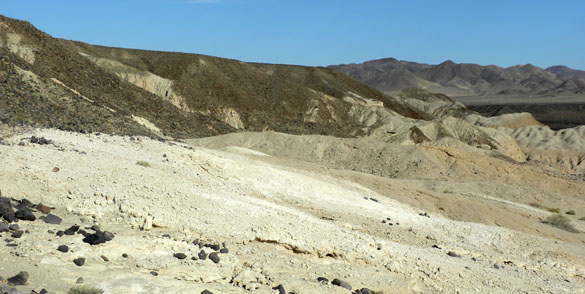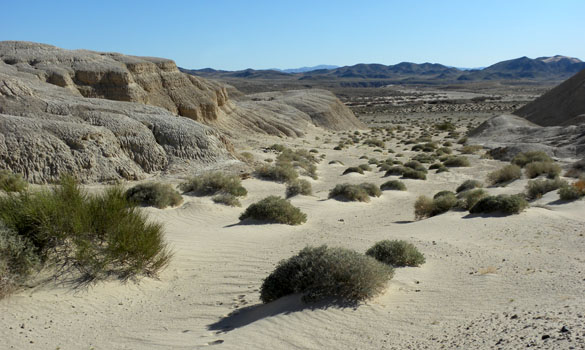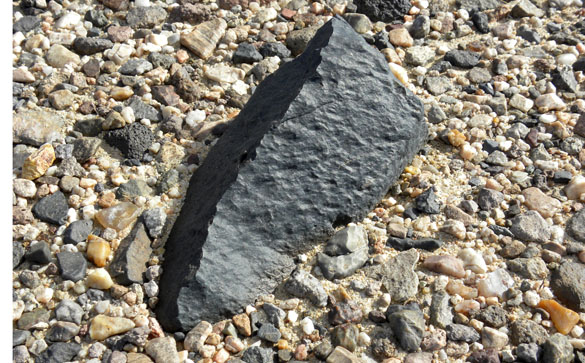ZZYZX, CALIFORNIA–East of Barstow and west of Afton Canyon was a very large pluvial lake during the Pleistocene. This Lake Manix was hundreds of feet deep, and its catastrophic drainage through Afton Canyon about 185,000 years ago must have been a great spectacle. This afternoon we explored one of the southern shores of this ancient lake, and then climbed down through its eroding bottom sediments.

Shoreline of Pleistocene Lake Manix. The dark rocks to the left apparently are remnants of an alluvial fan delta which extended into the lake shallows. The light-colored sediments below and to the right are from the lake itself. The white band in the foreground appears to be a type of coastal tufa formed by the agitated lake waters mixed with waters coming from the fan.




